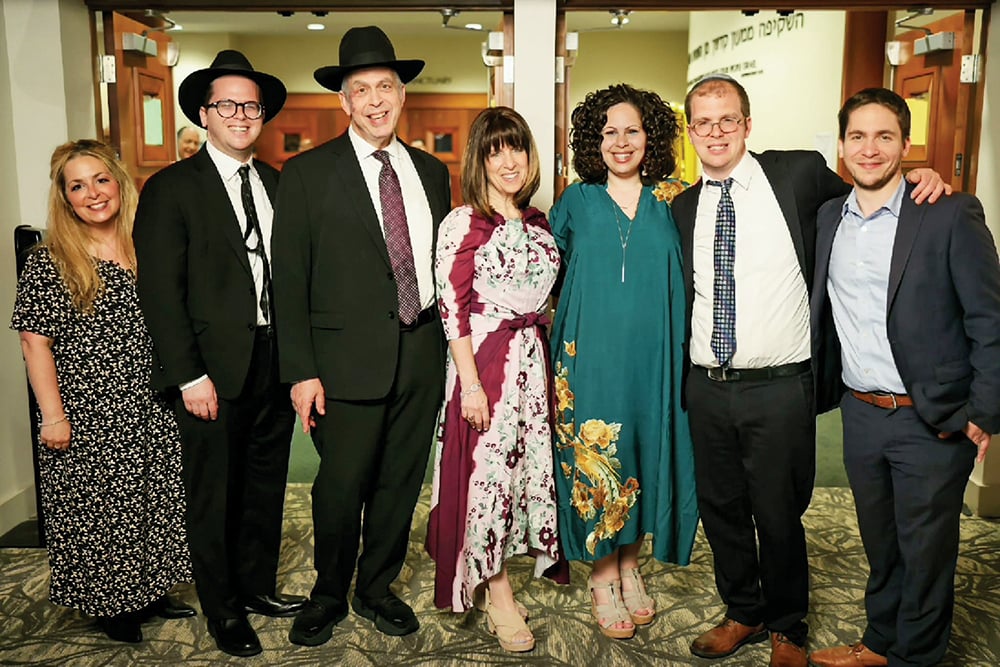





2020 was quite a year in California: record heat and fires, COVID-19 and stay-at-home orders. For those in California’s $40-billion wine industry, it was a year like no other. The Jewish Link reached out to a number of California’s kosher winemakers and winery proprietors to learn about the challenges they faced and to find out how they fared.
“It was like we all had these signs on our backs that read, ‘Kick me and kick me again’,” explained Ernie Weir of Hagafen Cellars, California’s oldest kosher winery. “We had a triple whammy, with low rainfall and a very strong desiccating heatwave in the beginning of August that dehydrated grapes abnormally. Then we had the first wildfire—and so much smoke that we didn’t see the sun for two or three days. Then we had the second fire, which led to more smoke and the non-harvest or provisional harvest of grapes.” And all of that is before considering the impact of COVID-19 on the industry.
In fact, California had a record-setting year of nearly 10,000 incidents of wildfires that burned in excess of 4 million acres of land (almost 4% of the entire state). While some vineyards burned up entirely, a significant percentage of those that didn’t burn were affected by what winemakers refer to as “smoke taint”—particles of ash coating the grapes and imparting an acrid, smoky flavor. “The problem with smoke taint is that you don’t get a nice smoky flavor like in a smoky scotch,” explained Benyamin Cantz, winemaker/proprietor of Four Gates Winery. “What you get is ‘ashtray.’
“Smoke taint is not like an on-off switch; it’s a complete sliding scale. Some [wines] will be completely unusable, while some are only moderately damaged. [Also] there are two different forms of smoke taint: a free-chemical version and a bound-chemical version. With the free version, if it is sufficient, you can [immediately] sense it yourself, while the bound can become unbound over time. So you can bottle a wine thinking it is perfectly good, but a year later it becomes unbound in the bottle and you have a ruined wine.”
In California’s premier northern growing regions of Napa and Sonoma, smoke taint abounded. “Many wineries in Napa decided that they are not going to make or harvest any red wines,” explained Weir.
Since white wines are generally fermented without the grape skins, and smoke taint mostly resides in the skins, white wines are generally less affected. However, “smoke taint can work its way inside the skin,” said Gabe Weiss, winemaker and co-owner of Shirah winery. “They called off the pick of our riesling due to smoke.”
While grapes can be chemically tested for smoke taint, “there is only one lab in California, ETS, that has equipment to test for smoke taint and they were completely overwhelmed, and they were two months behind,” recalled Cantz. Some wineries, such as Covenant, had to send samples to Australia to be tested. “I think that they test much more accurately for smoke taint in Australia than they do here,” said Jeff Morgan, Covenant Wines’ proprietor. But for many wineries the choice was: Make wine without laboratory data, or don’t make wine at all.
At Shirah winery, a boutique winery that buys small allotments of grapes from all over the state, they based their winemaking decisions on how close vineyards had been to the fires. “We’ve been making some wines from Northern California, that we simply could not make this year,” said Weiss. As careful as they were in their selections, “we did have smoke taint in the cellar. We had a few lots from growing regions where we assumed that the smoke layer was not heavy enough to have any significant smoke taint.” As it turned out, these young wines “now taste like peated Islay whisky,” said Wiess.
At Hagafen, they opted for what is known as provisional harvesting, meaning that they made the wine not knowing whether or not the grapes were affected; if they prove to be affected, the winery can potentially get a refund from the vineyard owners or report a loss. “We made cabernet sauvignon; we made cabernet franc; we made syrah; we made pinot noir,” said Weir, “but I think the jury is still out. We think cabernet sauvignon is going to be fine; we think syrah is going to be fine; and we have doubts about some of the others, but we will only bottle high quality wines. We have too much of a reputation to protect.”
Fortunately, at Covenant, they had harvested their Napa-grown cabernet sauvignon before the region’s devastating Glass Fire began, but “some of our Sonoma wines have higher levels of bound glycosides,” said Morgan. “They taste great, and you can’t tell anything is wrong, but the verdict is out on whether they will come unbound in the bottle later or not.” Additionally, there was another roughly 20% of their vineyards that they didn’t even try to harvest because they were too close to the fires.
At Herzog Wine Cellars, California’s largest kosher winery, “the value wines from Lodi and Clarksburg [areas] which were not affected by the fires will be unaffected” in terms of production, explained Proprietor Jonathan Herzog, but “in the reserve program, probably 90% of the wines will not be produced.”
“There are technological methods to remove smoke components” from wine, said Morgan. “I’m considering using one of them. There are two technologies: One is filtration with special smoke-taint filters out of Australia, and the other is something called the spinning cone. It spins the wine in a vacuum and creates a kind of distillation without heat that allows you to remove certain components and then return the ones that you want. We’re experimenting to see if we like it.”
Whereas Weiss, in addition to filtration, spoke of some more low-tech options. “Adding oak is another thing people do. Oak is toasted, and the smokiness [of the taint] can meld [with the toasted oak] in a way that masks it. But that’s an alternative I would prefer to avoid. Or you can simply blend [the taint] away.
“Smoke isn’t a bad taste,” Weiss continued, “and if it’s a subtle part of a blend it can be wonderful. Another option, and this is more marketing, is to sell the wine as a ‘smoked wine’—instead of looking at it as a flaw, some people might think it’s cool.”
The fires were just one of the major problems that confronted California wineries this season. “Everyone is focused on the smoke,” said Weiss, “but the heat potentially was just as bad, if not worse. We lost a lot to the heat. It just toasted the vineyards [and the grapes shriveled] to nothing. There was nothing to harvest.”
Perhaps nobody was more affected by that heat than Four Gates Winery, a small mountainside winery in the Santa Cruz mountains whose vineyard is “dry-farmed” (unirrigated). “The weekend weather event that led to the lightning that caused the [CZU Lightning Complex] fire, was here in Santa Cruz 107 degrees on Friday, 104 on Shabbat, and 108 on Sunday,” recalled Cantz. “What I have now is not even raisins. The grapes weren’t mature enough to even produce raisins. The pinot noir and the cabernet franc were completely toasted.”
Cantz was able to salvage a little of his harvest, however. “With the chardonnay, we were able to save 10, 15, maybe 20%, and the only reason we were able to save that much is because we trimmed every cluster. There was not a single cluster we could just drop into the bucket. We were also able to save about 10% of the merlot by doing the same thing.”
While Four Gates may have been the most devastated by the heat, almost every winemaker I spoke to lamented the impact of the heat on their season. “The heat affected us a lot,” said Weiss. “It changed yields. We bought a lot of things where we were expecting to get one-and-a-half tons, and we ended up with minuscule amounts of wine from our block. Now we have this partial barrel of wine, which should have been four barrels.” Additionally, “the chemistry of some of our wines changed a little bit because of the extreme heat,” he said. “You have a lot of acid, a lot of malic acid, but you have a terrible pH. We had a lot of strange chemistry this year.”
While wine, as a part of agriculture, is considered essential by the state of California, and thus all of the wineries continued to operate during stay-at-home orders, COVID-19 did have an impact on all the wineries, but none more so than the Herzog Wine Cellars. “In terms of production,” said Herzog, “we’ve had breakouts; we’ve had employees [with COVID-19], and we’ve been shut down, [both] the production and the bottling line. We’ve had ons and offs throughout the whole building. And now we face an early Pesach. It’s been a struggle to produce and keep on producing during these COVID times.”
While no other winery mentioned having employees with COVID-19 or having to shut down—“We’ve been very lucky,” said Morgan—all have been affected by COVID-19. For Joshua Rynderman of Kos Yeshuos Winery, COVID-19 all but precluded him from even making it to the vineyards. “I produce kosher wine in both hemispheres, California as well as in South Africa,” he said. “South Africa went into hard lockdown sometime in March, and that included stopping all international travel. At the end of July, I was able to get on a repatriation flight back to California.”
COVID-19 also had a significant impact on wineries that distribute their wine via traditional retail channels. “We faced a pretty big challenge,” said Shimon Weiss, co-owner and business manager of Shirah Winery, “because 50% of our business is still through [wholesale] distribution, and the distribution channels dried up right before Passover. All of the wine that we had sold to our distributors was already delivered—stores had it on shelves. Then boom, right before Passover retail shut down. That impacted our cashflow pretty significantly.”
Yet for many wineries, the losses of traditional distribution were at least in part made up through direct-to-customer sales. “We found that our wine club customers, aside from a few who were negatively impacted by the pandemic, kind of doubled down, and our online sales and direct sales to consumers actually increased,” said Weiss.
At Hagafen Cellars, “we had a lot of curbside pickup,” said Weir. “We were able to call, access or email many people and had a wonderful response online. In a sense, we almost flipped our business over: What had previously been in-person is now online, and what had been online is now in-person.”
At Four Gates Winery, where they sell all 3,000 bottles of wine that they produce each year in an online sale each January, they sold out in a record seven minutes. “I wasn’t sure what impact COVID would have [on the sale] until it happened,” said Cantz.
What was truly impressive, after this horrific year, was the resilience of the winemakers and winery owners, all of whom were actively planning how to improve and prepare for the challenges of the 2021 season. There was also a real sense of community among the kosher-wine producers. “The only thing that makes us do what we’re doing, and continue to do what we’re doing,” says Herzog, “is knowing that we’re not the only one. It’s not that there’s a target on our back, but not on others. It’s something that all of us are going through together.”










